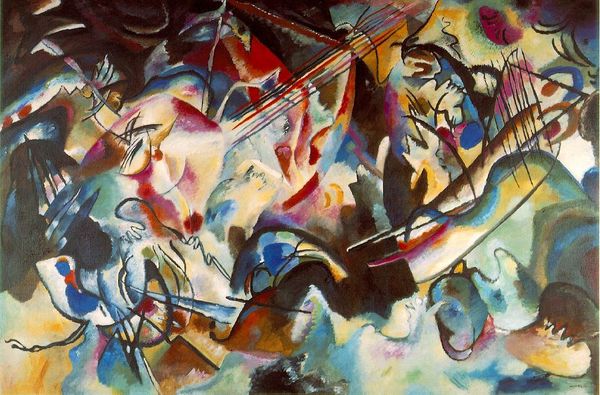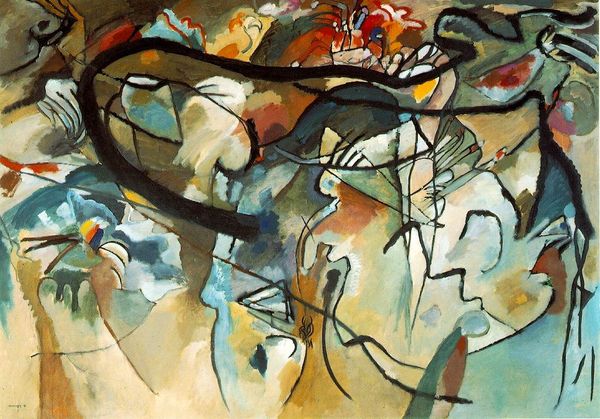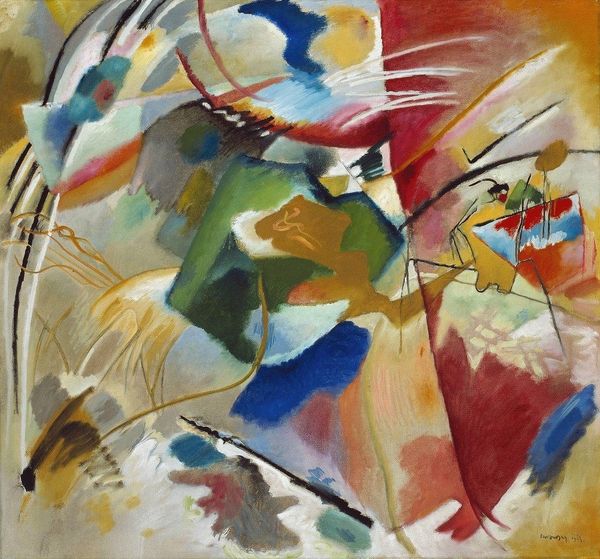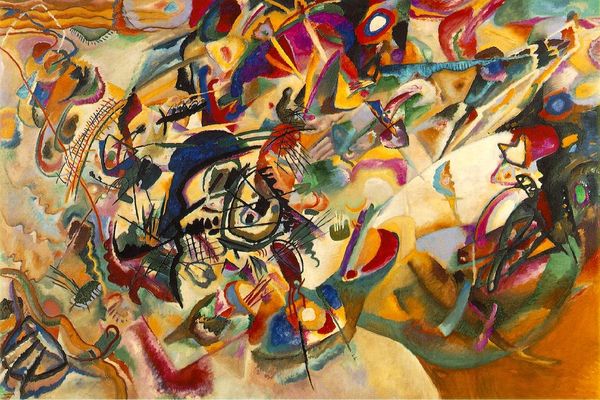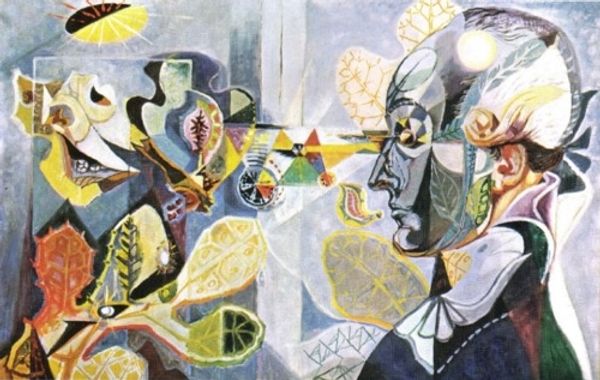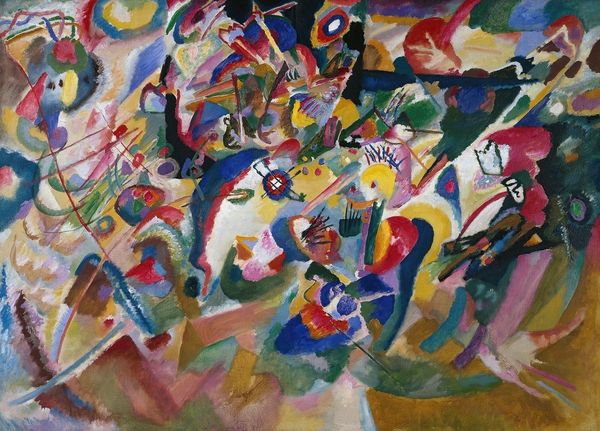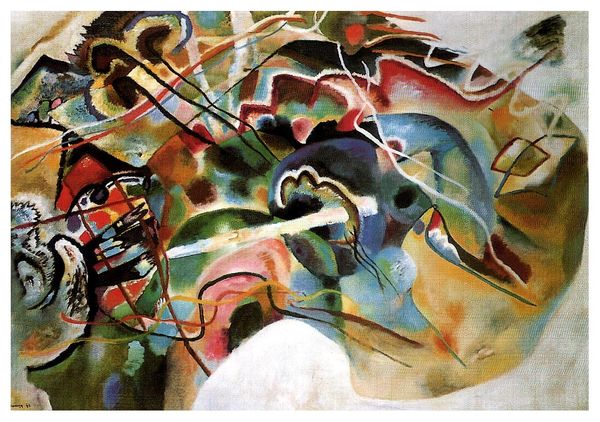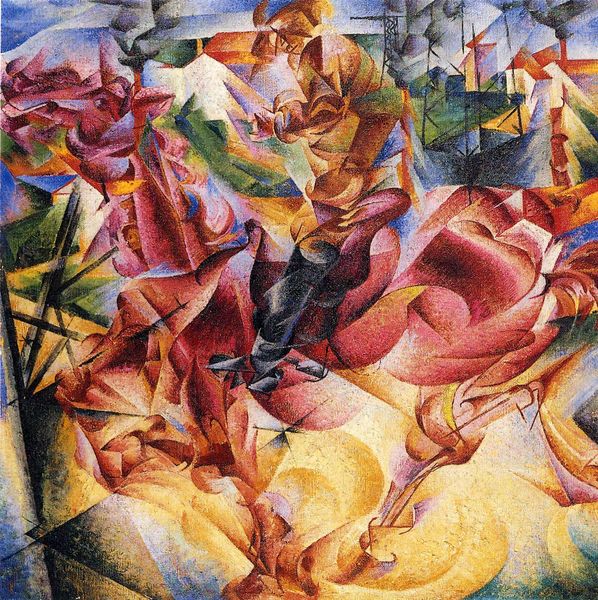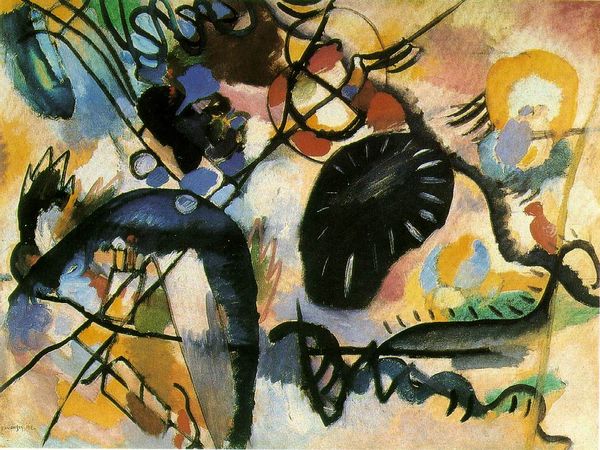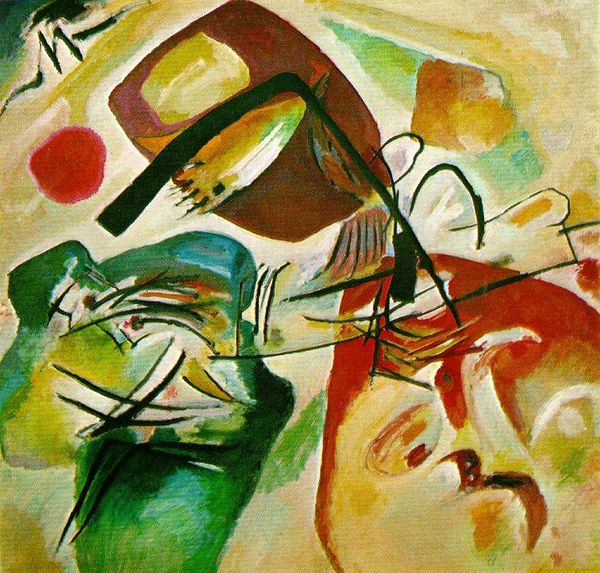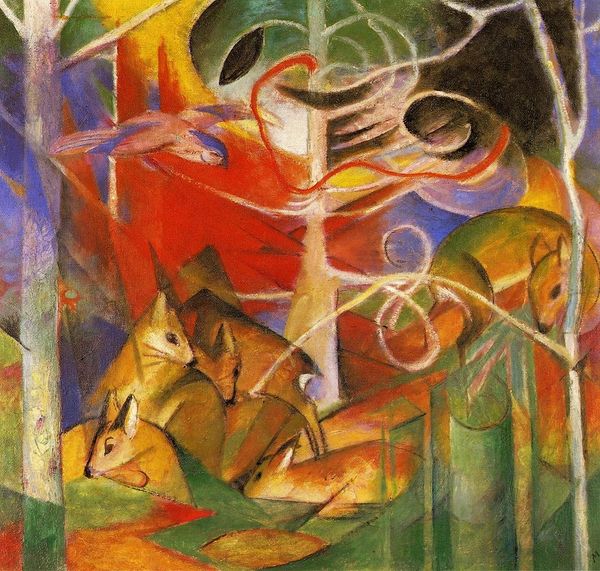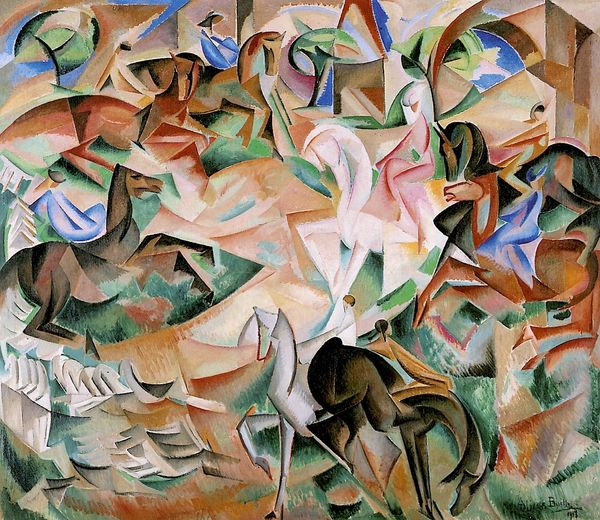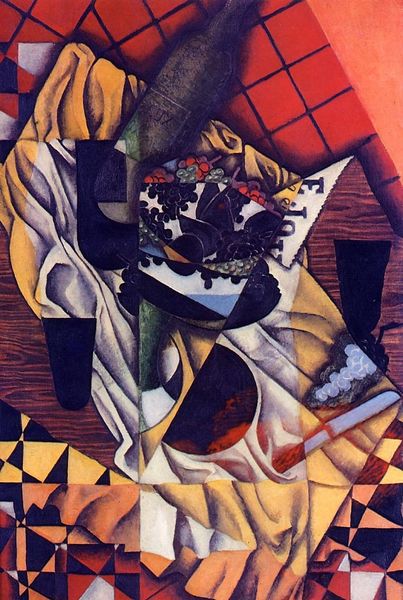
Dimensions: 129 x 176 cm
Copyright: Public domain
Curator: Here we have Wassily Kandinsky’s "In Grey," painted in 1919. It's a piece that sits squarely within his explorations of abstract expressionism and geometric abstraction. Editor: Well, the "in grey" part is accurate! There's a definite muted tone overall, punctuated by these bursts of orange and red. It’s like looking into the aftermath of some kind of explosion, scattered yet strangely balanced. Curator: That explosion, as you put it, coincides with a turbulent time in European history. Painted shortly after his return to Russia during World War I and amidst the Russian Revolution, the artwork reflects the socio-political upheavals he witnessed. The abstraction serves, in my view, as an intentional distancing from recognizable imagery during a period of societal fragmentation. Editor: Interesting point. From a purely visual standpoint, though, look at the way he deploys those geometric forms. The sharp angles, the contrasting textures. Notice the fine lines against those broader areas of color, there’s such energy there. It creates a dynamic tension that practically vibrates off the canvas. Curator: Absolutely, and part of that dynamism comes from the evolving function of art during that historical period. Kandinsky was heavily involved with avant-garde movements that aimed to redefine art's role, pushing it away from mere representation and toward… Editor: …Pure feeling! I think the restricted color palette actually enhances the feeling. It’s almost melancholic, the kind of subdued intensity that you get from a minor key in music. Do you sense that? Curator: Yes, though I see that subdued intensity stemming from a disillusionment in revolutionary ideals, impacting the perception of societal narratives at the time. He experienced firsthand the gap between utopian promises and the realities of revolution. Editor: So, art as a seismograph, registering social tremors? Regardless, one can’t deny Kandinsky’s manipulation of color and form evokes something profound, beyond representation. Curator: Precisely, this abstract piece not only mirrored social and political change, but was actively commenting on it. Editor: Agreed. It seems that within the geometry of abstraction there’s no evading either our emotions or indeed our histories.
Comments
No comments
Be the first to comment and join the conversation on the ultimate creative platform.
